What Next After “Harakiri” in Karnataka?
Total Views |
The political ethos quite some time before the crucial Karnataka Assembly elections, was ringing the warning bells to the party in power in Karnataka. Obviously , it fell on deaf ears. The Government in party leaders were all enjoying , perhaps counting the days to reach the victory day for celebration.
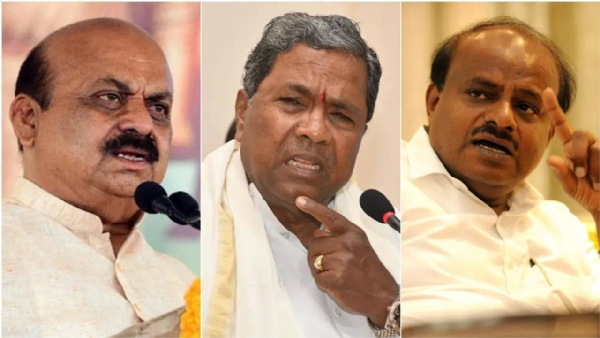
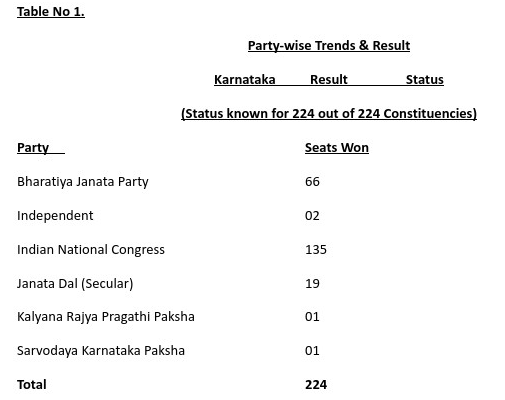
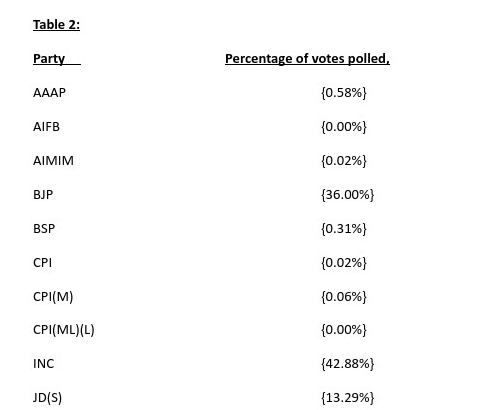
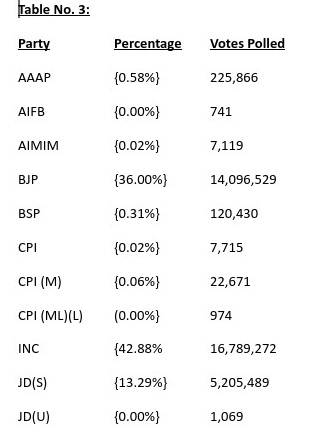
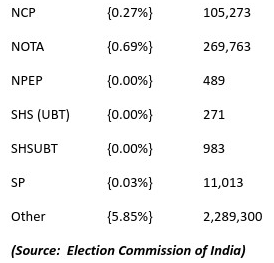
The Congress has won 135 seats in the 224-member Karnataka Assembly. The BJP has won 66 seats and the JD(S) 19, according to the Election Commission. Earlier in the day, welcoming the leading trend and the seats won, Congress leaders in Karnataka unanimously termed it an indication of the anti-BJP public sentiment and the success of Rahul Gandhi’s Bharat Jodo Yatra and his fight against the saffron party’s alleged divisive and communal politics.
It is interesting to note that the ruling clique has lost and won quite a few seats by a small margin.
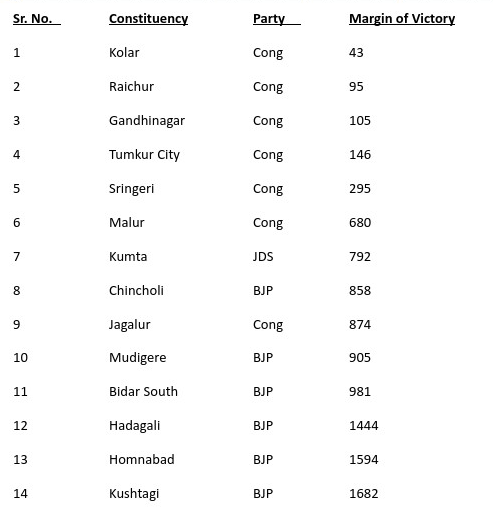
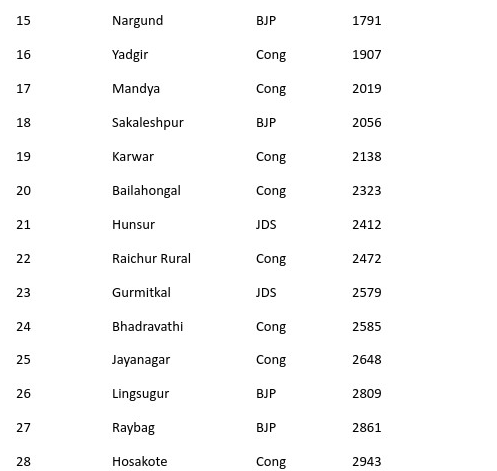
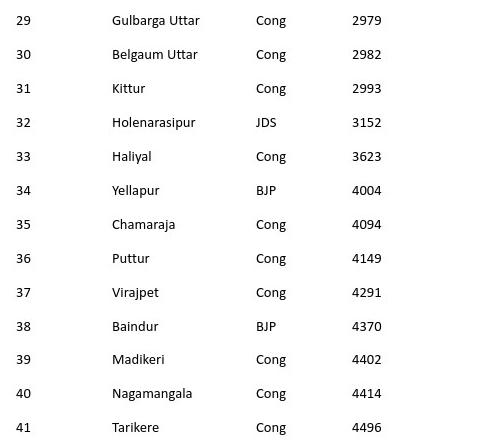
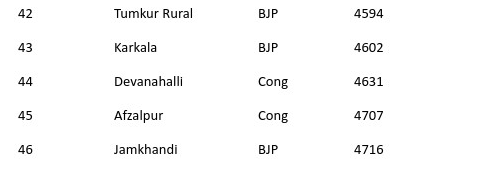
The above mentioned statistical exercise indicates that although the INC has won 135 seats in a House of 224, it is also a fact which cannot be ignored that a little more than 1/3 of its candidates have just scraped through with a very thin margin.
Of course, victory is a victory!
And, of course, the incumbent ruling clique cannot afford to ignore its own blunders which these have committed during their rule (or misrule)? Their high command in Delhi living in a (fools’) paradise expecting a spectacular victory by introducing the electorate with its international achievements and modern techniques of travelling specially meant for the communities for whom it was affordable, but luxuries made available to all in the name of the poor. This was supported by quite a few scams unearthed by the media and the opposition political party leaders, hands in gloves. This was suppressed by the political leaders at such a juncture i.e. on the eve of the general elections to the State Vidhan Sabha. Surprisingly, the ruling party remained quite unaware of the conditions prevailing at the ground level. An adverse message was sent to the political leaders in the opposition and esp. the voters.
The state leadership despite the infighting in the party and completely ignoring its grave consequences were dreaming for a second term of governance .The high command in Delhi perhaps was aware of the volatile situation at the ground level in the state. In order to overcome the problem of seat allocation, they decided to take an adventurist decision, it was to offer a chance to quite new faces. This decision was considered as a policy of paving the way for emergence of a new leadership in the party. Many new faces, almost 1/3 of the total 224 candidates were fielded. It was a painful decision, yet it was tried. The figures stated earlier in this article, it could be observed that it was a close fight and many of them lost by a very small margin of votes. Perhaps, the booth workers fell short of efforts. The killing instinct was absent.
Certainly, the humiliating defeat in Karnataka is not a promising omen for the ruling party at the Center. The staunch Modi followers may not understand the signal or the forewarning signaled by the ‘Karnataka’ lamp-post.
Fortunately, the Prime Minister does not entertain flunkies around him or in his decision-making process. But that is not enough, best administrators-cum-advisors with political flexibilities is that what is required.
Defeat in Karnataka has opened a Pandora’s Box—several political commentators and as well as well wishers of the BJP have come forward in analyzing the aftermath of the defeat. A quick glance at the figures of votes polled by each candidate of the Congress and the BJP must lead the readers to a very interesting situation. It will be interesting to note that in several constituencies the margin of votes between the winner and the loser one is either in one digit or in two digits. Several candidates reached the winning point just by scraping through victory line by a mere two or three digit number of votes.
All that can be said is that winners’ success was neither a spectacular one nor the losers’ disgrace was really of that sort. The statistical record will indicate the game of hide and seek with regard to winning and losing went on. It is also an evidence of how tough and close the winning line of the battle was. The number of road shows and public meetings held by the Prime Minister, would substantiate the concern of the ruling party and the Prime Minister had out of the fear of the destined fate.
The situation was that it was anybody’s game! As if it all depended on the swinging pendulum.
After a careful scrutiny of the statistics, the following factors need to be examined meticulously. The message that was rendered by the Karnataka electorate was, first, the electoral response was a slap on the face of the ruling clique which had to face the corruption charges leveled by one and all.
Second, the state party leadership had become so helpless; its dependence on the high command had been to the extent of absurdity. The political commentators criticized that neither the Chief Minister nor the State party president had any freedom to take decisions in the interest of the party itself. The high command had put pressures of different sorts on the State leadership, if such criticism was true the results are bound to be the way it were.
Third, the local leadership was seen so dependent on the personal charisma of the Prime Minister Narendra Modi for electoral battle that these leaders and their electoral might was miserably exposed before the voters. The opposition too perhaps had realized that Narendra Modi of 2014 had ceased to be the same in 2023. After all age is a factor which has to be respected.
Fourth, the high command’s policy to neutralize the dominant caste in Karnataka i.e. the powerful lobby of the “Lingayat” esp. their efforts of belittling the status and widespread acceptability of the most powerful “Lingayat” leader B S Yeddyurappa, did hurt the other fellow backward communities and these turned away from the BJP. One cannot forget or ignore the fact that BSY was a powerful leader of these other communities as well.
Fifth, the ruling clique was seen to have forgotten or ignored their silent followers, esp. women voters. Prime Minister’s all out efforts to quietly serve this silent group of voters, poverty-stricken landless laborers, and women and alike were not properly approached by the vote seekers. The opposition leaders spotted this very gap and succeeded in persuading them towards them.
Sixth, leaders from the Centre discussed in public meetings national and international issues and preferred to downplay local issues. The voters expected from the speakers to inform something on local problems.
In brief, it appeared as if the electoral battle was between the opposition leaders and the Prime Minister. The local leaders were not seen on any horizon. And at least in the State of Karnataka, the gateway to South India, the Prime Minister lost the battle (in the first 50 overs semi final, second semi-final to be held in ensuing December 2023 ), pending the final in 2024.
The nation is restlessly awaiting the final with all the might (say, of the Bhishmachary )and not a “Hara kiri “ if at all Indians have to save India from the clutches of the scattered, spineless, unruly although a few individuals called ‘the opposition’.





The Congress has won 135 seats in the 224-member Karnataka Assembly. The BJP has won 66 seats and the JD(S) 19, according to the Election Commission. Earlier in the day, welcoming the leading trend and the seats won, Congress leaders in Karnataka unanimously termed it an indication of the anti-BJP public sentiment and the success of Rahul Gandhi’s Bharat Jodo Yatra and his fight against the saffron party’s alleged divisive and communal politics.
It is interesting to note that the ruling clique has lost and won quite a few seats by a small margin.




The above mentioned statistical exercise indicates that although the INC has won 135 seats in a House of 224, it is also a fact which cannot be ignored that a little more than 1/3 of its candidates have just scraped through with a very thin margin.
Of course, victory is a victory!
And, of course, the incumbent ruling clique cannot afford to ignore its own blunders which these have committed during their rule (or misrule)? Their high command in Delhi living in a (fools’) paradise expecting a spectacular victory by introducing the electorate with its international achievements and modern techniques of travelling specially meant for the communities for whom it was affordable, but luxuries made available to all in the name of the poor. This was supported by quite a few scams unearthed by the media and the opposition political party leaders, hands in gloves. This was suppressed by the political leaders at such a juncture i.e. on the eve of the general elections to the State Vidhan Sabha. Surprisingly, the ruling party remained quite unaware of the conditions prevailing at the ground level. An adverse message was sent to the political leaders in the opposition and esp. the voters.
The state leadership despite the infighting in the party and completely ignoring its grave consequences were dreaming for a second term of governance .The high command in Delhi perhaps was aware of the volatile situation at the ground level in the state. In order to overcome the problem of seat allocation, they decided to take an adventurist decision, it was to offer a chance to quite new faces. This decision was considered as a policy of paving the way for emergence of a new leadership in the party. Many new faces, almost 1/3 of the total 224 candidates were fielded. It was a painful decision, yet it was tried. The figures stated earlier in this article, it could be observed that it was a close fight and many of them lost by a very small margin of votes. Perhaps, the booth workers fell short of efforts. The killing instinct was absent.
Certainly, the humiliating defeat in Karnataka is not a promising omen for the ruling party at the Center. The staunch Modi followers may not understand the signal or the forewarning signaled by the ‘Karnataka’ lamp-post.
Fortunately, the Prime Minister does not entertain flunkies around him or in his decision-making process. But that is not enough, best administrators-cum-advisors with political flexibilities is that what is required.
Defeat in Karnataka has opened a Pandora’s Box—several political commentators and as well as well wishers of the BJP have come forward in analyzing the aftermath of the defeat. A quick glance at the figures of votes polled by each candidate of the Congress and the BJP must lead the readers to a very interesting situation. It will be interesting to note that in several constituencies the margin of votes between the winner and the loser one is either in one digit or in two digits. Several candidates reached the winning point just by scraping through victory line by a mere two or three digit number of votes.
All that can be said is that winners’ success was neither a spectacular one nor the losers’ disgrace was really of that sort. The statistical record will indicate the game of hide and seek with regard to winning and losing went on. It is also an evidence of how tough and close the winning line of the battle was. The number of road shows and public meetings held by the Prime Minister, would substantiate the concern of the ruling party and the Prime Minister had out of the fear of the destined fate.
The situation was that it was anybody’s game! As if it all depended on the swinging pendulum.
After a careful scrutiny of the statistics, the following factors need to be examined meticulously. The message that was rendered by the Karnataka electorate was, first, the electoral response was a slap on the face of the ruling clique which had to face the corruption charges leveled by one and all.
Second, the state party leadership had become so helpless; its dependence on the high command had been to the extent of absurdity. The political commentators criticized that neither the Chief Minister nor the State party president had any freedom to take decisions in the interest of the party itself. The high command had put pressures of different sorts on the State leadership, if such criticism was true the results are bound to be the way it were.
Third, the local leadership was seen so dependent on the personal charisma of the Prime Minister Narendra Modi for electoral battle that these leaders and their electoral might was miserably exposed before the voters. The opposition too perhaps had realized that Narendra Modi of 2014 had ceased to be the same in 2023. After all age is a factor which has to be respected.
Fourth, the high command’s policy to neutralize the dominant caste in Karnataka i.e. the powerful lobby of the “Lingayat” esp. their efforts of belittling the status and widespread acceptability of the most powerful “Lingayat” leader B S Yeddyurappa, did hurt the other fellow backward communities and these turned away from the BJP. One cannot forget or ignore the fact that BSY was a powerful leader of these other communities as well.
Fifth, the ruling clique was seen to have forgotten or ignored their silent followers, esp. women voters. Prime Minister’s all out efforts to quietly serve this silent group of voters, poverty-stricken landless laborers, and women and alike were not properly approached by the vote seekers. The opposition leaders spotted this very gap and succeeded in persuading them towards them.
Sixth, leaders from the Centre discussed in public meetings national and international issues and preferred to downplay local issues. The voters expected from the speakers to inform something on local problems.
In brief, it appeared as if the electoral battle was between the opposition leaders and the Prime Minister. The local leaders were not seen on any horizon. And at least in the State of Karnataka, the gateway to South India, the Prime Minister lost the battle (in the first 50 overs semi final, second semi-final to be held in ensuing December 2023 ), pending the final in 2024.
The nation is restlessly awaiting the final with all the might (say, of the Bhishmachary )and not a “Hara kiri “ if at all Indians have to save India from the clutches of the scattered, spineless, unruly although a few individuals called ‘the opposition’.


